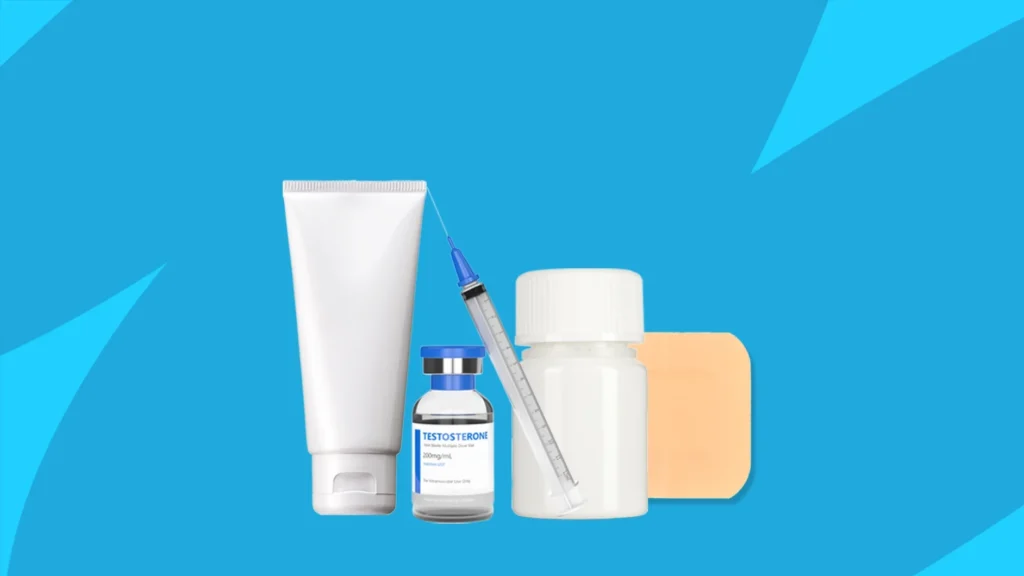Testosterone Replacement Therapy (TRT) has long been the standard treatment for men with hypogonadism and transgender men seeking masculinization. As medical technology and scientific research evolve, TRT is entering an exciting new era. Emerging innovations and cutting-edge treatments are transforming how testosterone is administered, monitored, and optimized for safety and effectiveness.
In this article, we’ll explore the latest developments, breakthrough therapies, and trends shaping the future of TRT.
🚀 1. Next-Generation Delivery Systems
➤ Long-Acting Injectable Testosterone (e.g., Nebido®, Aveed®)
- These long-acting testosterone undecanoate injections last up to 10–14 weeks per dose.
- Benefits: Fewer peaks and troughs, more consistent hormone levels, fewer injections.
- Increasing availability and FDA approvals may make these a preferred option for many patients.
➤ Transdermal Innovations
- New formulations of gels, creams, and patches are being developed with improved skin absorption and fewer application site reactions.
- Microneedle patches and nanoemulsion gels are under investigation for painless and controlled testosterone delivery.
➤ Oral Testosterone Therapies
- Products like Jatenzo® (testosterone undecanoate capsule) have improved bioavailability without the liver toxicity of earlier oral versions.
- These are gaining popularity for patients preferring a pill-based regimen.
🧬 2. Personalized Hormone Optimization
Precision medicine is making its way into TRT. Instead of a “one-size-fits-all” approach, future TRT regimens will be tailored using:
➤ Genetic Testing
- Pharmacogenomic testing can reveal how a patient metabolizes testosterone, guiding dose selection and delivery method.
- Helps identify genetic risks related to cardiovascular events or prostate sensitivity.
➤ AI and Digital Monitoring
- Wearable devices and apps may soon track testosterone-related symptoms (mood, sleep, libido) in real time.
- AI-driven platforms can adjust dosing schedules based on user-reported outcomes and biometric data.
➤ Biosensors & Smart Implants
- Experimental biosensors implanted under the skin may detect real-time testosterone levels and release microdoses as needed—creating fully automated hormonal balance.
🔬 3. Novel Adjunctive Therapies
➤ Selective Androgen Receptor Modulators (SARMs)
- SARMs are compounds that target androgen receptors with greater tissue selectivity (e.g., muscle and bone) and fewer prostate effects.
- Still under clinical trials, SARMs could offer TRT-like benefits with reduced side effects and no need for exogenous testosterone.
➤ Clomiphene and hCG as Primary Therapies
- For men wanting to preserve fertility, therapies like Clomid (clomiphene citrate) or hCG (human chorionic gonadotropin) are gaining traction.
- These stimulate the body’s own testosterone production and may replace traditional TRT in select populations.
💉 4. Advances in Pellet Technology
Pellet-based testosterone delivery is also evolving:
- Bioabsorbable polymers and controlled-release coatings can now extend the hormone’s release duration to 6–12 months.
- Next-gen pellet implants may include combined hormone therapies (e.g., testosterone + anastrozole) for enhanced balance and estrogen control.
🧠 5. Focus on Cognitive and Mental Health Outcomes
Recent research is shifting attention to testosterone’s neurological and psychological roles, especially in aging men:
- Studies explore TRT’s effects on cognitive decline, memory, and neurodegenerative diseases like Alzheimer’s.
- TRT may play a role in improving depression, fatigue, and anxiety in hypogonadal men, although results remain mixed.
This focus is likely to produce novel treatment protocols prioritizing not only physical but mental performance.
🦠 6. Regenerative and Cell-Based Therapies
A revolutionary direction in hormone therapy is the integration of regenerative medicine:
➤ Stem Cell Therapy
- Early-stage research is examining whether mesenchymal stem cells (MSCs) can help regenerate Leydig cells in the testes, restoring natural testosterone production.
➤ Gene Therapy
- Though still experimental, gene editing technologies like CRISPR could eventually correct genetic causes of low testosterone or restore proper hormone production permanently.
🌍 7. Global Access and Telemedicine
The digital health boom is reshaping access to TRT:
- Telehealth clinics now offer TRT evaluations, prescriptions, and follow-up care without in-person visits.
- Remote diagnostics, at-home blood collection kits, and digital consultations make TRT more accessible than ever.
As regulation evolves, more evidence-based virtual TRT programs are expected to emerge, improving equity in care.
🧾 Summary: What the Future Holds for TRT
| Innovation | Potential Impact |
|---|---|
| Long-acting injectables | Fewer treatments, improved compliance |
| Personalized medicine & AI | Tailored dosing, better safety, real-time monitoring |
| SARMs & endogenous boosters | Safer alternatives to exogenous testosterone |
| Advanced pellets & patches | Longer-acting, better tolerated delivery options |
| Cognitive health studies | Expanded use of TRT for mental wellness |
| Regenerative therapies | Potential cure for primary hypogonadism |
| Digital TRT platforms | Wider access and convenience for patients globally |
✅ Final Thoughts
The future of Testosterone Replacement Therapy is bright, with innovative delivery systems, precision medicine, and regenerative therapies reshaping how we treat low testosterone. Whether you’re starting TRT for hypogonadism, gender affirmation, or age-related decline, these emerging trends promise more personalized, effective, and safer treatments.
Stay informed and work closely with a hormone specialist to take advantage of the newest advancements in TRT tailored to your health goals.




